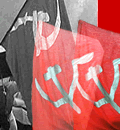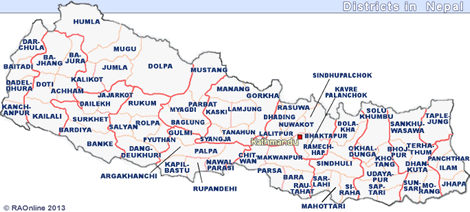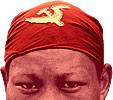In
Nepal's eight-year war with Maoist guerrillas, no group has been harder
hit than the police. They have lost more than 1,200 of their number. The
police consistently suffer more casualties than the army, who were not
used at all against the Maoists for the first five years of the conflict.
To find out more about what the police have been through, BBC correspondent Charles Haviland travelled to the isolated town of Beni, where memories of a recent bloody ordeal are raw.
In recent times, our Maoist comrades have kept themselves busy with abductions of teachers and students. Citizens have been marched off to the jungles under the shadow of the gun where they have been indoctrinated in 'revolutionary education' and then released in a seeming act of benevolence. These wholesale abductions are mainly restricted to hapless students and teachers in remote schools. They are taken to unknown destinations and forced to listen to harangues under the barrel of a gun.
In
the absence of government, the Maoists spread rapidly across the Terai.
In six short years, the western Terai is now a Maoist stronghold. Just
six km from Nepalganj in the town of Khajura, the Maoists held a three-hour
mass meeting on the evening of 18 June. About 300 armed rebels dressed
in combat fatigues marched openly down the streets of the town, barely
a few minutes drive from the regional army headquarters.
The combatants' current route for smuggling weapons and explosives from the Indian border is as follows: from Belauri check-point of Kanchanpur district via Jogbudha of Dadeldhura and Melauliat the border of Dadeldhura and Baitadi districts, then to Bajura and finally to Achham. The Maoists are purchasing explosives from lower-level staffers of the Dhauli Ganga hydro project at Dharchula in India. The Maoists are also smuggling arms and explosives from the Tibetan border via Jharganda and Taklakot. There is a high concentration of Maoists in the remote Gokuleshwor, the area that borders Darchula and Baitadi districts; Purchungehat and Kuwakot areas, bordering Bhajhang and Baitadi; Ramaroshan and Binayak of Aachham district and Ghagal Khimadi, the border of Doti and Kailali districts and Melauli.
July 2004
The locals know better. Three weeks after the army ended its operation, the rebels are back in Rukumkot. "We knew the army was coming," Deepak, a Maoist district committee member, tells us. "We hid in the jungle for a couple of days while the soldiers searched the houses. When they left, we came back." July 2004
Journalists
from western Nepal talk about the hardships they face in reporting from
the war zone.
Hundi
Rawat tells grieving relatives not to cry because the journalists
are here. Her widowed daughter is in the middle.
Most
of the villagers were too shocked to speak. Hundi noticed the presence
of the journalists and consoled the others: "Don't worry, stop crying,
they will take our news to the outside world."
Mohan Mainali was one of the journalists, and still remembers being moved by how much hope those without hope still have on the power of the media. July 2004
Journalists
from western Nepal talk about the hardships they face in reporting from
the war zone.
As
the chaos caused by Maoist insurgency in rural Nepal and demand for the
restoration of democracy in urban areas continues to plague the county,
and as attacks on Indian properties and interests continue, political and
diplomatic observers in Delhi have begun debating earnestly whether India
should assert itself more forcefully and even consider military intervention
as it did in what was then East Pakistan (now Bangladesh) in 1971 and Sri
Lanka in 1987. This is an alarmist scenario for some, but many think it
should not be ruled out in the eventuality of the situation further deteriorating
and particularly if refugees start streaming across Nepal's borders into
Indian territory.
Nepalese Maoists have developed close ties with Maoists and other extreme communist groups called Naxalites in India. Their ties with People's War Group of Andhra Pradesh, Maoist Communist Center of Bihar and Jharkhand, and the Communist Party of India [Marxist-Leninist] are said to be particularly strong. These extremists have been running virtually parallel administrations in the rural hinterland in Indian states May 2004
This article describes the program of FM radio operated by Maoist rebels in Nepal under a very difficult and dangerous conditions. As they want to change the kingdom into a republican state, they are facing a brutal repression from state army. This one day's radio program gives insight into what message they want to convey to people. I
had been to East Nepal in December, 2004 to give training to grassroots
development workers on food security, who were working in remote and inaccessible
villages which are under direct influence of Maoist rebels waging a war
since 1995 to bring political change in Nepal. After two days of interaction
and socialization the development workers told me that they listen to Maoist's
radio whenever they have the chance. They need to listen to this program
in order to know their activities and persons who take the responsibility
of local governance. In some events, they need to contact those leaders,
which they usually do, to smoothly run the programs and develop a social
network in case they face troubles.
|








